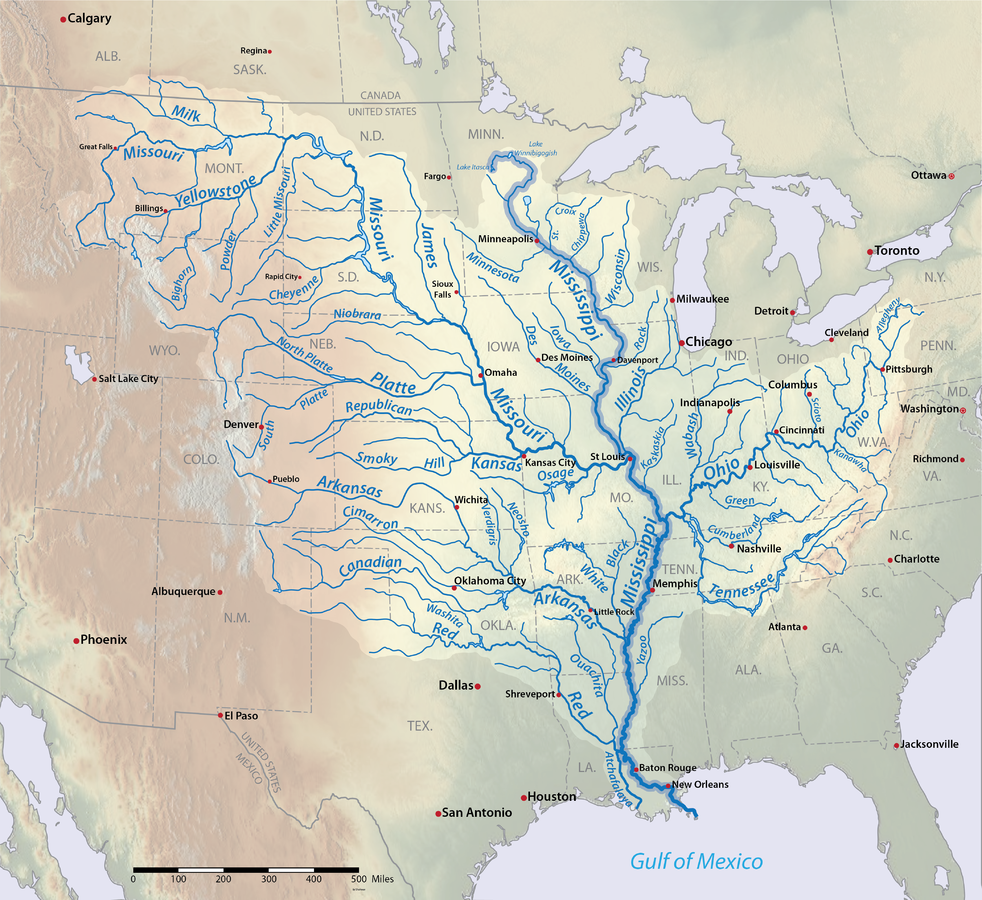
When I worked for the South Dakota Game, Fish & Parks, it was inevitable that every summer I’d get approached by people asking about sharks in the Missouri River. I’d always explain that sharks have never been documented this far north, but that usually didn’t quell their fears.
The furthest inland a bull shark has ever been seen in North America is Alton, Ill. Alton sits along the Mississippi River about 15 miles north of St. Louis, and 1,000 miles from the Gulf of Mexico. It was there that two commercial fishermen in 1937 noticed that their mesh traps were consistently getting raided by a large predator.
In response, the anglers built a strong wire trap and baited it with chicken guts to catch the musky they assumed was terrorizing their setups. Instead what they got was a 5-foot bull shark that weighed over 80 pounds. The shark was treated like a local celebrity and attracted crowds for days to the Calhoun Fish Market.
Most importantly for this story, though, is that there’s photographic evidence of the men in town with their catch. Without it, most would probably write off the story as another example of fishermen stretching the truth. Other bull shark sightings in unlikely areas lack the same kind of proof.
A story of a boy being attacked in Lake Michigan from a 1975 man-eating sharks book proved to be false after the author admitted he just wanted to capitalize on the Jaws craze. A shark jawbone found in the Mississippi River in Northern Minnesota in 2017 turned out to be from a sand shark, which can’t survive in freshwater and was most likely dumped there by a pet owner or prankster. An article from a Montana newspaper went viral in 2015 when it claimed that a fisherman caught a juvenile bull shark on the Missouri River, but it turned out to be an April Fool’s joke.
Over and over bull sharks have shown up in waters of the Great Plains, but only through fiction. That doesn’t mean it’ll never happen, though.
We can look to the American eel for an example of a saltwater fish caught far from home. American eels are born far offshore in the Atlantic Ocean and immediately migrate towards North America. They’ll then head up freshwater streams such as the Mississippi and Hudson rivers where they’ll spend 10 to 25 years maturing. After that, they’ll migrate back to the ocean to complete their life cycle.

It’s not uncommon for freshwater eel to show up in places like South Dakota, Minnesota, Nebraska and Iowa. Last year a group of biologists netted an adult in Cottonwood Lake, a shallow body of water more than 30 miles off the Yellow Medicine River in Minnesota. This is about 2,000 miles from the Gulf of Mexico and is comparable to a bull shark that once swam 2,500 miles up the Amazon River.
So, the river systems allow for bull sharks to get here, but would they stay?
A bull shark would absolutely have the food sources available to become a resident here. With the abundance of carp, catfish and panfish found in nearly every Midwestern stream, a bull would stay fat and happy.
However, the problem lies with the water temperatures. The Missouri and Mississippi rivers regularly dip below 35 degrees for months at a time, but a bull shark prefers tropical waters that stay above 69 degrees. While eels have the ability to shut down their bodies and essentially go dormant in cold waters, it’s believed that bull sharks don’t have the same skill. This means if a bull shark did make the long migration north, it would have to head south again before winter.
In our lifetimes it’s unlikely a bull shark will ever make it deep into the Heartland, though there is new research that shows bull sharks expanding their territory thanks to climate change. A scientific journal published just a few months ago revealed a new bull shark nursery near North Carolina. The area had the brackish, shallow water that bull shark pups like, but water temps weren’t warm enough for bull sharks until only recently.
Similarly, the Midwest has the water systems and food sources to support a bull shark, but it simply isn’t warm enough. Although conceivable, bull shark claims that far north are probably just another April Fool’s joke.
Black and white feature image is of Alton shark. Color image is from April Fool’s joke in Montana.





